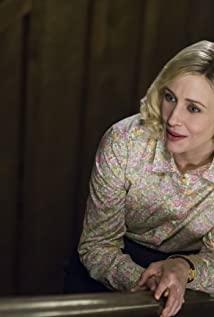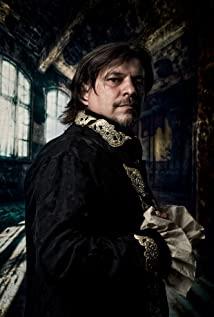[Film adapted as a literary work]
Nothing is more suitable to be adapted into a movie than this novel. Among the many themes that reflect World War II, either fierce or paranoid, with different perspectives, some are known for their grandeur, some It is strange and curious, but if it talks about the story's natural nature, the original way of impacting human nature, and the unforgivable mistakes, this is a shocking literature that surrounds the Auschwitz Jewish concentration camp but does not have any extraordinary claims. The work is well-deserved. The original work came to the fore in 2008 with a wonderful ingenuity. The line drawing of less than 50,000 (translated) characters has aroused extremely deep thinking. As an adaptation of the film, this film perfectly reproduces the inconsistency and extreme peace and calmness. , Which touches everyone's heartstrings.
Several scenes were added during the adaptation of the film. Child characters like Bruno, the protagonist, show respect for the original work while showing the emperor's sophistication and sophistication. Unfortunately, the images did not create more unreasonable imagination like words, so if only Limited to the plot in the novel, even the 80-minute foreshadowing is somewhat plain, which does not allow the audience to fully agree with Bruno’s change of wanting to be with the Jewish friends in the barbed wire at the end of the film. In order to make the story more reasonable, the screenwriter added a scene. Regarding Bruno’s military officer’s father fabricating a concentration camp documentary, the illusion of life in the documentary gave Bruno the full motivation for the next desperate and heart-wrenching adventures of the audience. Bruno also felt guilty for his betrayal at the critical moment. But all this disappeared when he vaguely realized that he might have entered a strange world that was not as good as he imagined. He began to panic, frightened, and panicked, and tried to prevaricate and leave, but the promise finally led him to destruction.
There are not even more than five important scenes in the film, and the cost is as low as a TV movie. The processing method is extremely conventional. In many cases, it is just shot and edited as usual. Arrange an empty space when it should appear, and arrange it when it is necessary to be cautious. A section of Shendu, without any expansion and redundancy, is also a continuation of the original work. After reading the Irish novel "Boy in Striped Clothes" in 2008, I was thrilled (even though this excitement was quickly replaced by the shock caused by "Suspect X's Dedication"), this book was published by Century Wenjing in 2007 The group’s other Italian novel, "I’m Not Afraid of You," is similar in the logic and structure of the story, and it is still an example that the author talks about. Zeng and his teacher discussed the feasibility of copying the story frame from a concentration camp to Zhazidong. At that time, he concluded that the biggest problem that can be foreseen by localization is that Zhazidong is stricter. After all, the supervision of political prisoners is different from genocide; In addition, the dregs hole is very small, and you may not be able to find it if you really want to find it. However, the film ended with an instant disaster, making the tragedy inevitable, convenient and reasonable, and really smart.
But even with such a play, it is still not easy to copy it. Interested friends can discuss with me privately.
[Lies and Negligence] The
lie in the film is established on a topic that is not allowed to be talked about. When a well-known thing is out of morals or lewdness and is inappropriately discussed and even embarrassed to be mentioned, the misunderstanding arises at the historic moment. This is an inevitable result caused by the state apparatus and the great dictatorship, and of course it also exists in all aspects of ordinary people’s lives. Even if the taboos in the historical environment can be avoided, it will eventually be difficult to obliterate the stains in private cases. Any evidence collection will lead to never The anticipated turmoil can be described as a treasure for the drama. As long as you are good at digging and making related stories diligently, you won't get stuck in monotonous and rigid.
From the beginning to the end, nothing can make Bruno realize that he is heading for danger, and the barriers and cleverness in the adult world should be the fuse of the tragedy. In the film, because of the inconvenience of his wife, he did not want to mention his true views on ethnic cleansing to his children. The emotional outbursts turned his back to Bruno and faced his husband as the commander. The conversation between Bruno and his sister who was brainwashed by the tutor did not touch on the matter. The essence of this; Shmuer did not give more exhortation out of worry and naivete. All intentions are oriented to trigger Bruno's rebellion and curiosity, and the accumulation of perceptual materials is even more important for his misjudgment.
Starting from the original intent of the tragedy, everyone is a victim. In this film, the liar Bruno is the biggest victim, and most of the others just conceal it, including the servant who saw Bruno stuff food in his bag, and confronted Bruno and then made a series of quite clever lies to his mother, although he guessed it. But it has not been dismantled; and even though the conscientious and loyal Nazi officers made concessions for the Gu Quan family, they still lost their beloved son. The tragedy woven by specific actions that are not lies or concealment after another is like desire and crime. Someone will always bear it and some will be held accountable. Can we talk about negligence, does it come from the chief or the mother’s obsession with personal feelings? Or the tutor’s over-interpretation of distorted beliefs? They all have an involuntary side. Are they going to point the finger at the kid in the concentration camp? The negligence in the story is more like a inevitability that has been accurately calculated. It comes from unconscious betting. It is a buy-out, irreversible, and a desire to discern and have forgotten to say.
[War Ethics and Structural Application] If you
leave this film, the setting of the historical environment can turn corruption into magic, and the family ethics in war has a more intriguing depth. The emotion that "Cape No. 7" can bring is far inferior to the cruelty and coldness elaborately engraved in Kim Kidd's "Recipient Unknown", but when it comes to the setting of the background, there are similarities. Those come from the post-war period. Subjects related to political changes can always make sensitive touches come as promised, which is also an important reason for the endless emergence of films reflecting the Nazi period. Words that touch the soul are always followed by national distress and personal survival. After the turmoil, the depression is not only full of misfortune, but also buries endless hatred of weeds. Literary and artistic works show different methods of history and historical legacy in the general environment. There are many recent conscientious works, and there is no lack of slant swords, mild and more intense.
In the changing environment, there are some films with obvious fairy tale color, but they are different from the colorful, lifelike, loveable ingenuity and paranoia of "Angels Love Beauty", "Big Dog People" and "Two Little No Guess", which are more different from " "Pan Shen's Labyrinth" is a heterogeneous commercial work that is almost subversive and joking. For example, the sad fairy tales in "Beautiful Life", "Bold Family", and "Goodbye Lenin" are deduced in the form of lies. They are permeated with optimism and are highly involved in the worldview of the film, but in the absurd style, they reveal extremely strong pessimism and a sense of substitution. There are tears in the laugh, and you can grab the hearts of the audience without vigorous rendering.
The reason why these three films were selected to exclude "Underground" and "The Rules of Apple Hotel" is because the former's methods are still quite different, while the latter's themes deliberately weaken historical events and environmental changes. These three have the same story frame, character shaping and plot promotion, and the clues are the same. The historical environment can be described as converging, and they have obtained rich commercial returns and excellent social responses, from images to music. From the front of the stage to behind the scenes, there was no failure, but the domestic film "Happy Time", which was also based on white lies, failed to gain a broader consensus from the absurdity. It was slightly cramped. In contrast, it is not as good as "Falling Leaves Returning to Roots." More thorough, but in terms of madness, no matter how "underground" is counted, Emir Kusturica is definitely a unique carnival artist, and that is another topic.
Large-scale productions are mostly routines, which are scientific rather than negative. The borders of South Korea, the two sides of China, the Berlin Wall, Yugoslavia, and militarism are all brilliant, and the structure has similar themes, "return", "collapse", and "disintegrate". "It's an iconic keyword, it will never go wrong with the tone, and the angle is rich and sultry, and if it is copied, it will also have a good blueprint for the story. Another example is the reference to "Peach Blossom Spring" from folk texts, the analogy of "Journey to the West", "Mirror Flower Margin" and "The Wizard of Oz" and "Lord of the Rings" adventure.
As mentioned earlier, the story structure of the two novels "I'm Not Afraid of You" and "The Boy in Striped Clothes" are almost the same, with similar children's perspectives and development processes, except that the former simply talks about kidnapping as a social issue. However, the writer brilliantly applied the routine to the Nazi concentration camps, using only similar brush strokes to complete the thematic narratives that are more humane and business prospects. The two novels have been put on the big screen successively, and after re-creation, they show their respective differences. The brilliance, but also different routes to the same goal in order to impress the audience as the result. There are many similar examples, such as "Charlie" and "Rejuvenation" that the author has compared before. The same logic, slightly adjusted from the starting point, and packaged into different works, is close to the basic idea of the initial stage of advertising creativity. NS.
For domestic dramatists, the appearance of "Crazy Stone" and "Silver Driver" is not accidental. Guy Ritchie is a landmark filmmaker. Ning Hao also marks a new high in the application of the framework to localization. I believe the college will To implement the methodological style in this direction, even if we don't allow Sean Penn, good screenwriters will always grow up.
2009.06.12 Su Fa, Beijing
View more about The Boy in the Striped Pajamas reviews










